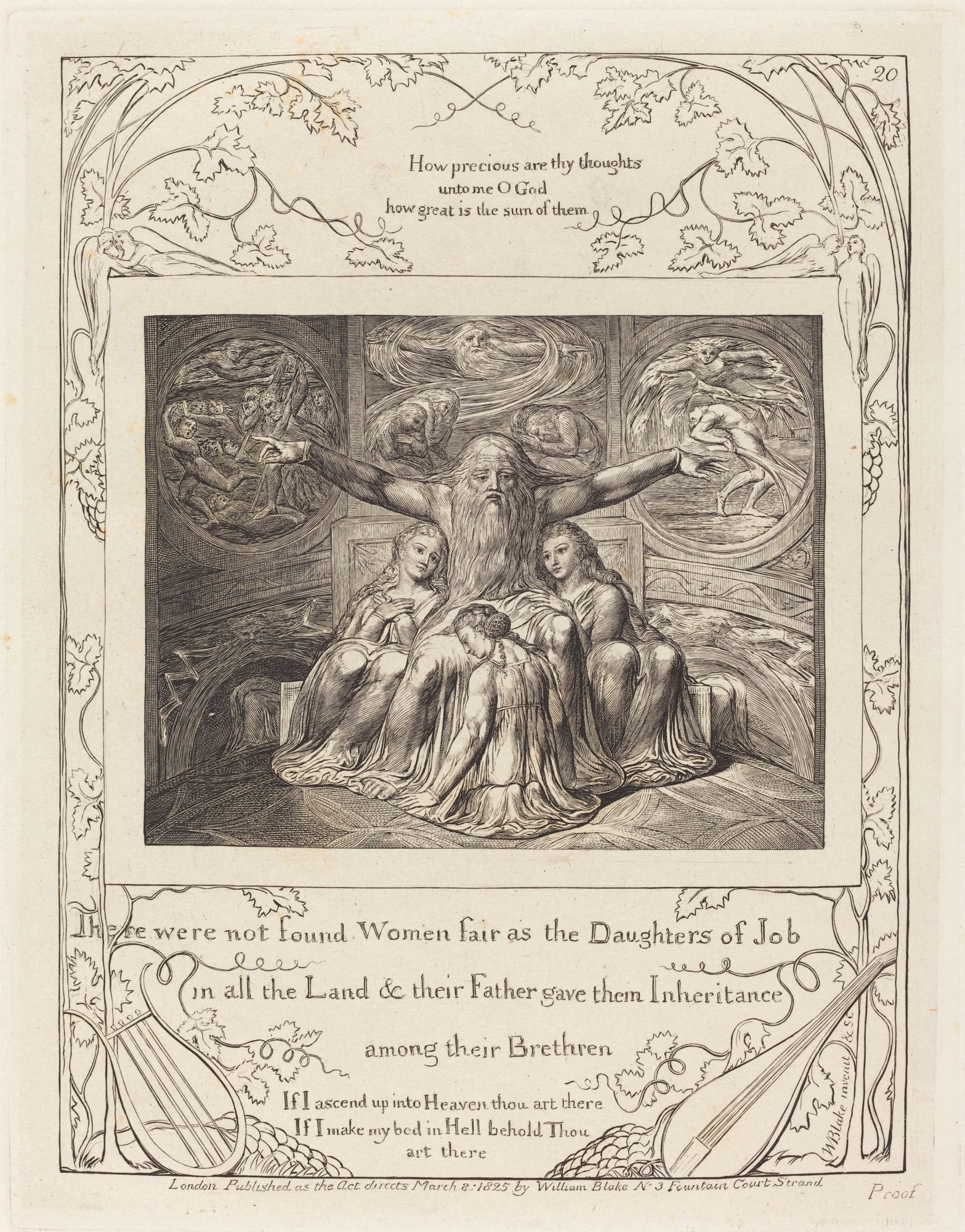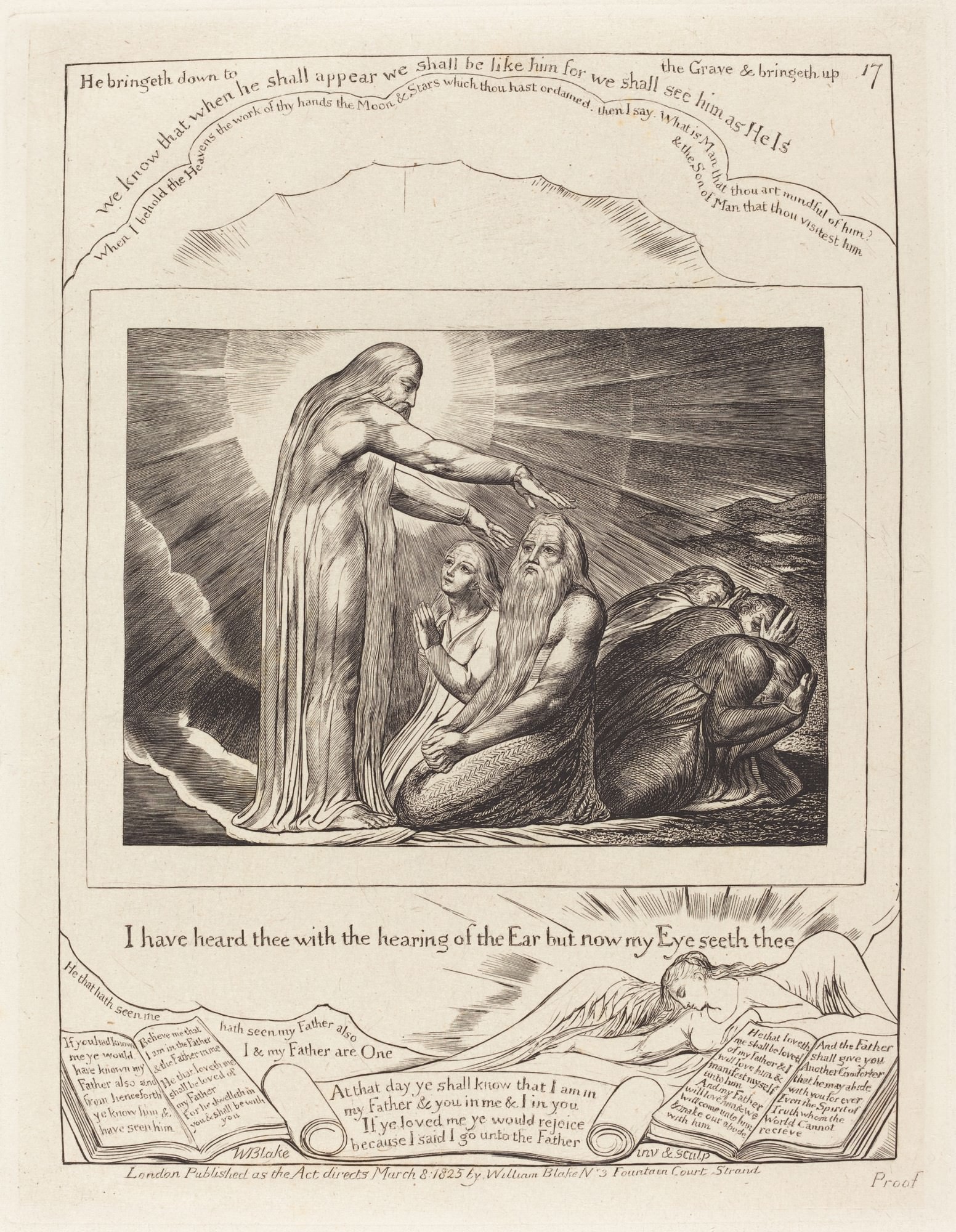
It was through Jim Morrison, vocalista do The Doors, I met William Blake, English outstanding artist of the nineteenth century.
I read two biographies on the leader of the Doors and both, albeit differently, Blake, He was present as one of the major influences of the musician, since, was just a textual passage written by the artist and used by Aldous Huxley that inspired Morrison to name his band “The Doors” (“The doors”, in Portuguese).
Here is that excerpt:
“When the doors of perception open, things appear to man as they really are: endless“.
Since that initial contact I had with the name of William Blake, my interest in his work has always been growing. The first aspect of his artistic legacy that has captivated me were their screens, which are filled with diverse symbols and molded by a deep mystique.
I admire his paintings in the constant appearances of celestial figures that tend to arouse curiosity and glimpse into the mind of those who contemplate. In addition to my appreciation for his paintings and drawings, recently, seeking approach me their textual productions, I ventured in reading a book entitled “The Marriage of Heaven and Hell & other Writings”.
In the issue that got, several poems and artist phrases, and they overflow puzzles through his words, suggesting certain meanings, although these seem to be always carefully veiled and built to be read and perceived only intuitively.
In this way, how Blake wrote is quite unique and I suppose that many people tend to give up easily reading the difficulty to interpret it in a clear and direct way. But behold, this precisely one of the points that I consider most attractive and valuable in all the works of our artist: the challenge it proposes; the mystery which he left to be unraveled.

I believe that up to this point, the reader realized that highlighted above two common aspects that are present both in paintings and in the poetry of the English artist, namely, the strong presence of religiosity and the mystical atmosphere, both of which they are quite symbolic and suggestive.
It seems to me that it is not possible to have studies or insights into analysis of their productions, without that there is also awareness (although basic) the two points I mentioned above. Blake, throughout his life, He had contact with classical works of occultism and from childhood, He claimed to have visions of spiritual entities.
This information can cooperate to penetrate in their artistic creations and try to unravel the mysteries that they bequeath, and also to indicate that Blake had great attention to human intuition, showing, including, right away from the reason that prevailed during the historical period in which he lived.
Yet, It is important to mention that the knowledge of these facts does not mean, necessarily, full understanding (or even partial) of your productions, for I have come across with scholars who knew such details and whose interpretations of the poetry and Blake screens were divergent.
In this way, It becomes dificultoso find and / or posit an objective sense to the productions of the English artist. By the way, I wonder if it is really possible to discover what a work of art carries as message (if there is message – whether intentional or mere matter of chance).
Sign up to receive Event News
and the Universe of Arts first!

Perhaps, trying to unravel an artistic production is something too risky, especially is trying to William Blake, since the interpretation involves rationality, conceptualization and reflection and art, on the other hand, It is not a rational language.
Therefore, I think that the free and spontaneous contemplation that is through the senses is the most noble and true path that exists in the relationship between the human being and the work of art. This magical moment and one in which the viewer turns off the physical world around him while contemplating a work, may be the key to open the doors of perception, referred by Blake.
For these reasons, per hour, this is my interpretation and reflective proposal: art is the key that unlocks that exists behind the doors of perception, e quando we allow juts-the, in the material world and its laws move away, and recognize the infinite, I suggested endless possibilities and that is beyond space and time.
Therefore, instead of trying to rationally examine the pictures and words of William Blake, trying to postulate conceptual meanings and threads them, perhaps we should simply intuit them through our perception, so that, us to connect with the doors that lead us to their hermetic depths.
…
JULIANA VANNUCCHI
Sorocaba – São Paulo
Instagram | Website Fanzine Brasil

